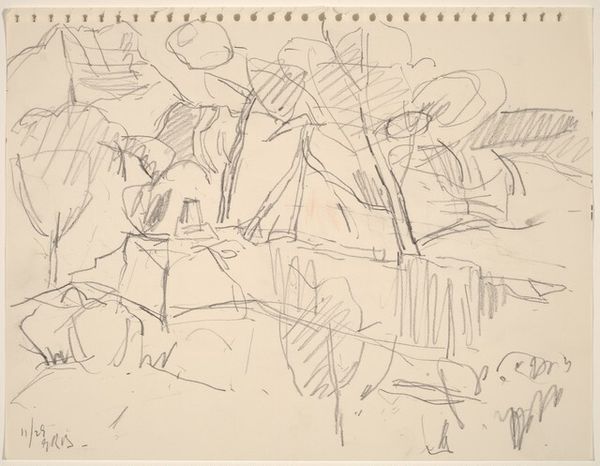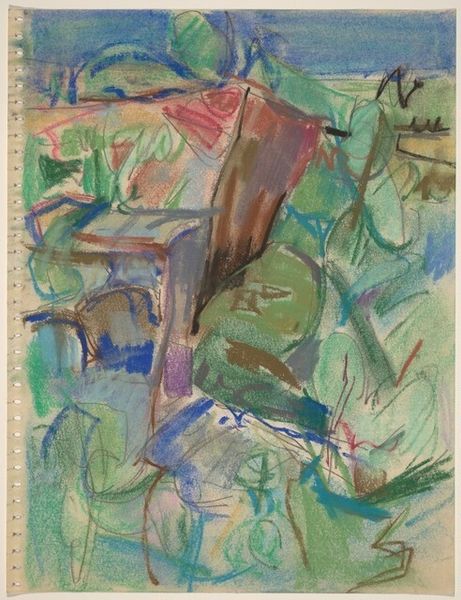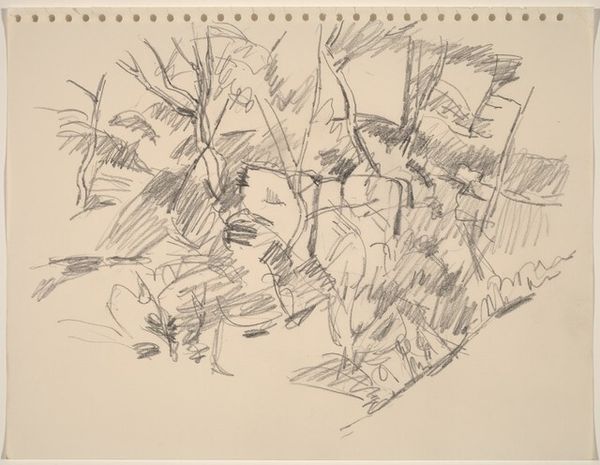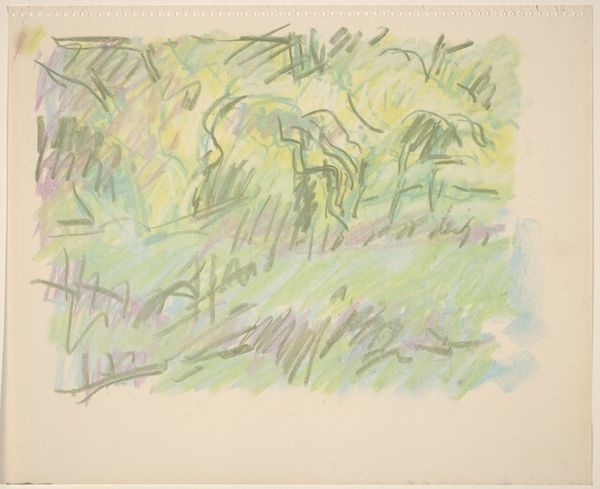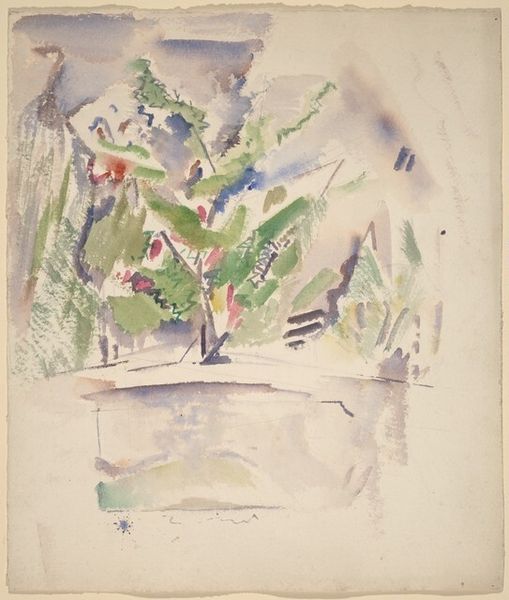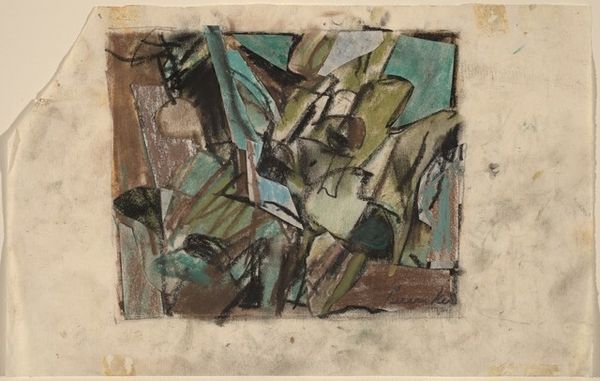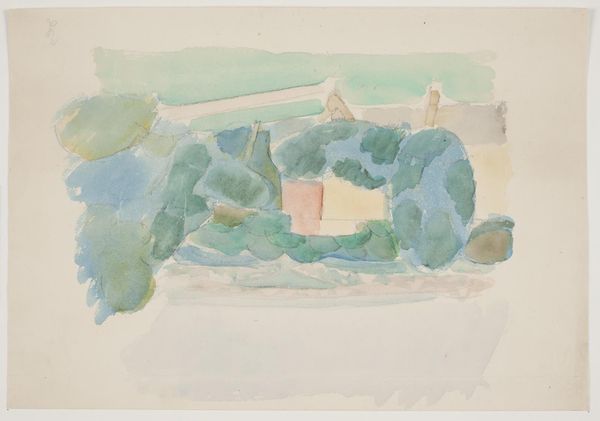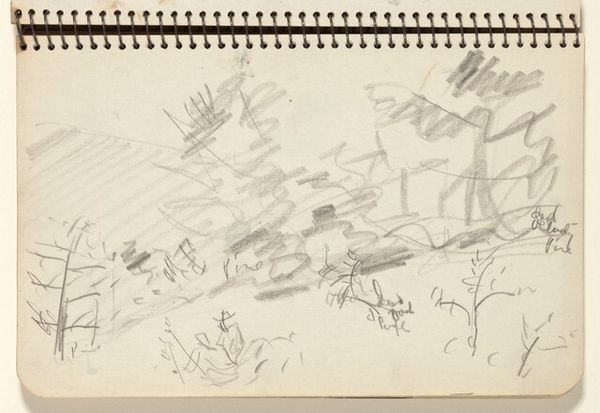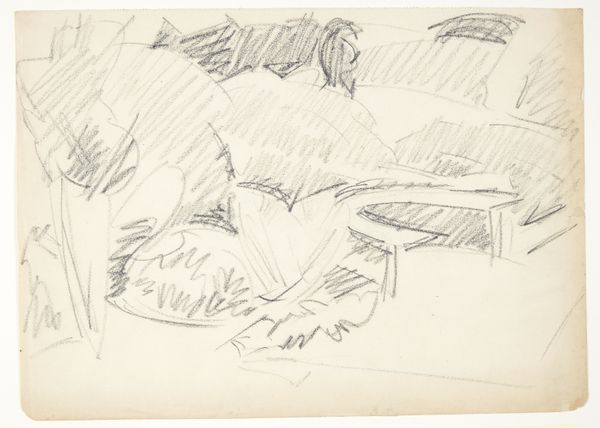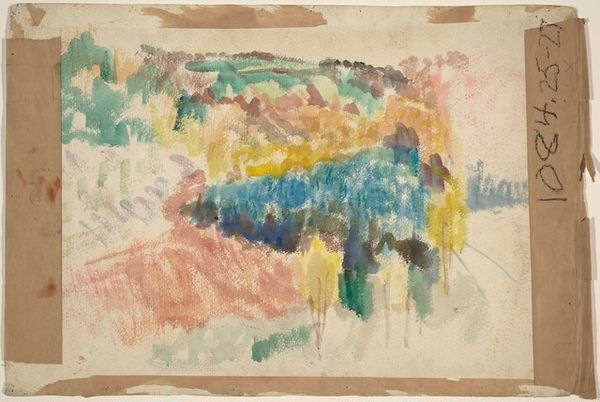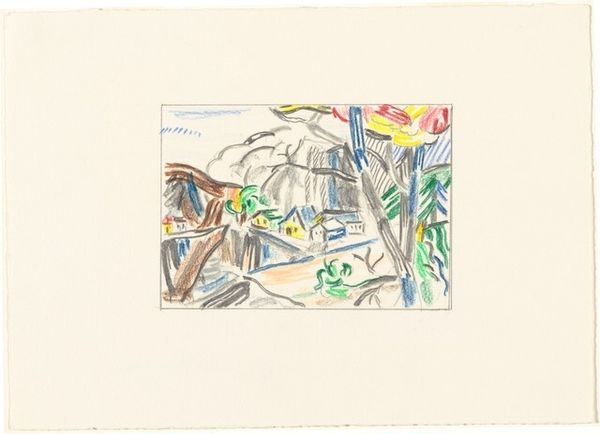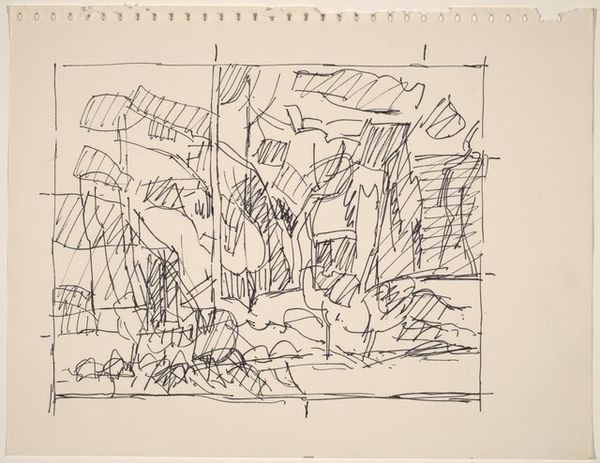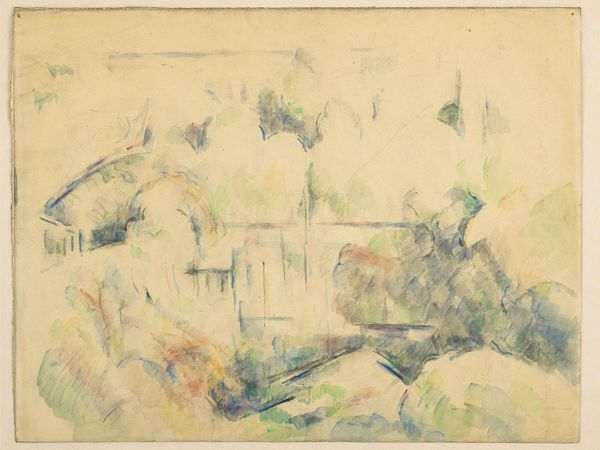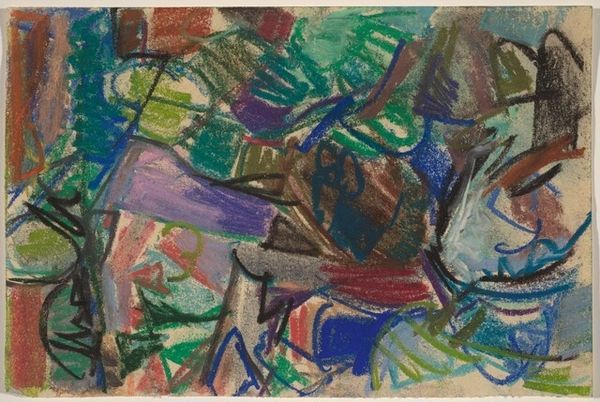
drawing, coloured-pencil
#
abstract-expressionism
#
drawing
#
coloured-pencil
#
form
#
coloured pencil
#
abstraction
#
line
Dimensions: overall: 17.8 x 14 cm (7 x 5 1/2 in.)
Copyright: National Gallery of Art: CC0 1.0
Curator: This vibrant "Untitled" drawing by George Bunker, likely created around 1963, pulses with a playful energy. Its medium is coloured pencil, scribbled across the page in layers. What’s your initial take? Editor: It strikes me as a jumble of raw emotion, almost child-like in its spontaneity. I’m immediately drawn to the colours – they seem at once harmonious and clashing, creating a controlled chaos. Curator: Indeed. Bunker’s abstract expressionist style is clear. The lack of defined forms pushes the focus onto pure colour and line. We see swirling shapes that hint at figures, or perhaps a landscape, but remain tantalizingly ambiguous. Do you see recurring shapes that could hold deeper meanings? Editor: I see the interplay of diagonals and curves battling for dominance – maybe reflecting a turbulent social and political climate in the 60's. I think about the anti-war movements and civil rights marches as an attempt to find structure and meaning within what may feel senseless. It feels impulsive but perhaps only hints at hidden meanings or coded protests. Curator: I see that! Abstraction as protest - a valid interpretation. Though perhaps there is something less overt too, and instead Bunker grapples with questions of pure form. Notice how he frames the central composition with a crude border of green – grounding it. The use of colored pencil brings its own unique dimension as a very intimate and delicate material. Editor: I suppose that this type of line, these colors in close proximity with an overriding tension do create a kind of space – something more akin to a fleeting thought that shifts without ever being set in place. The abstraction then works on many levels—as an object of feeling and thinking, rather than some codified structure to decipher. The question then becomes how does an abstraction like this function in culture, is it a tool or a symptom? Curator: I find that your cultural reading opens this piece up for a more nuanced look. Seeing it purely as an aesthetic exercise seemed somewhat flat before, but by engaging with social currents you inject the artwork with more of a social presence and urgency. Editor: Thanks - and in that regard I am also happy for you making it approachable through the use of formal elements of art making and technique that allows its more subtle meanings to come alive. Perhaps in an art museum setting like this, these pieces find their richest and most complete context for reception.
Comments
No comments
Be the first to comment and join the conversation on the ultimate creative platform.
